The train ride north offered time to reflect. My rucksack, stuffed with crampons, an ice axe, endless layers, and more than a few nerves, sat beside me. Leaving my kids was bittersweet, but this was an essential pilgrimage: a chance to develop my winter leadership skills, refine my decision-making, and learn to manage people in some of the harshest conditions the UK has to offer. I had a stop off at Kingussie for a night in a bed and breakfast for the last short journey up to the lodge.
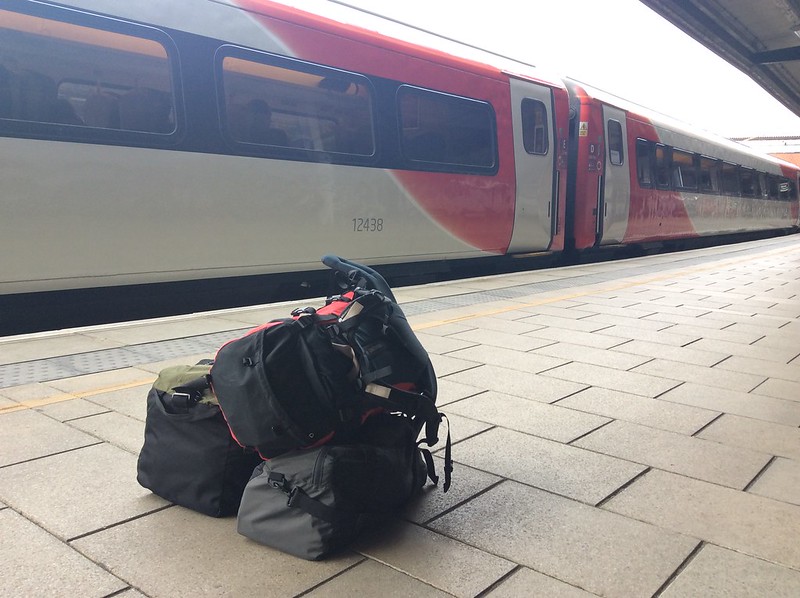
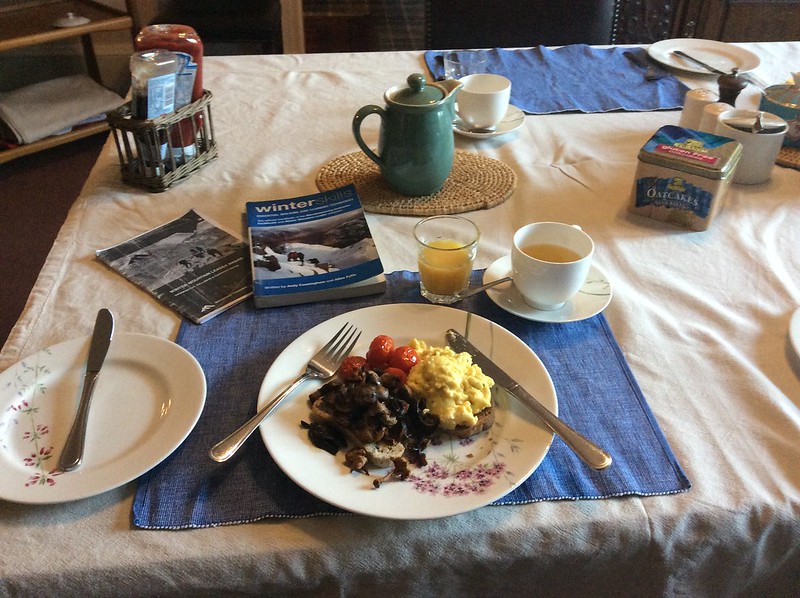
A short taxi ride later, I arrived at Glenmore Lodge, the national outdoor training centre. Inside, groups of mountaineers checked gear, studied maps, and prepared for the elements. The sense of anticipation was tangible.
Before settling in, I did what any restless mountaineer does: I went straight onto the snow, dropping off my holdall and finding a slope nearby. I threw myself down it, rehearsing self-arrests with my ice axe. Winter in the Scottish mountains is not to be underestimated. That night, I meticulously checked my kit, knowing full well that preparation is the fine line between comfort and suffering, safety and risk. One of the great things about Glenmore Lodge is you can borrow kit if there is something you have forgotten or some slightly different kit you wanted to try. As I had travelled up by train I left my large daysac at home, so I was able to borrow one of theirs.
Day 1: Into the Whiteout
Location: Coire Cas
Weather: Heavy snow, 50+ mph winds, poor visibility, avalanche risk: considerable
The first morning set the tone for the week: equipment checks, safety briefings, and leadership discussions. As well as some quick instruction on how to use avalanche transevers, as part of a trail the centre was doing. Then it was time to head out into the mountains with a quick drive up the road in the minibus. Swirling spindrift, whiteout conditions, and relentless wind made even basic movement a challenge. This was quintessential Cairngorm winter.
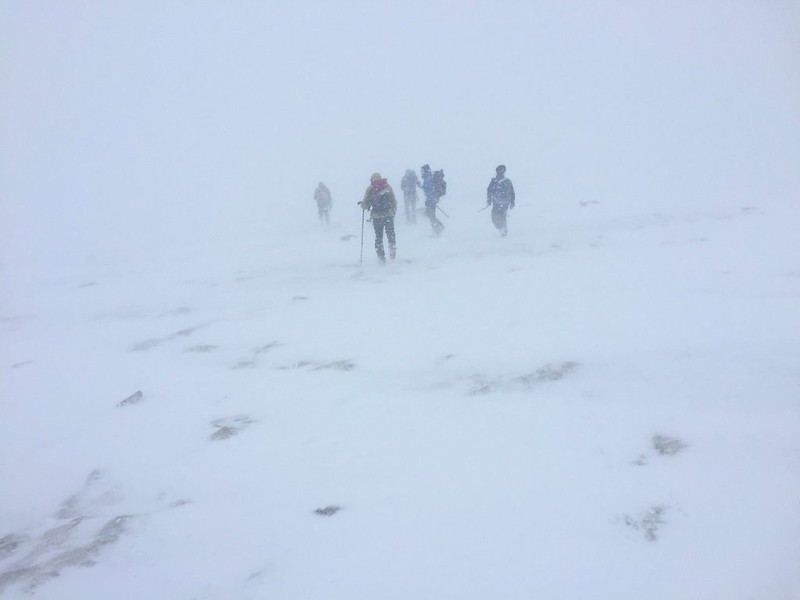
Navigation was our first major task. With visibility near zero, we relied solely on pacing and bearings, reinforcing that in winter, your compass becomes your lifeline. The day also introduced basic snowcraft, from self-arrests to managing gear in hostile conditions. An evening session on winter navigation and avalanche risk assessment capped off a mentally exhausting first day.
Day 2: Security on Steep Ground
Location: Castle Hill
Weather: Mild, light rain, 10–30 mph winds, good visibility, avalanche risk: moderate
With calmer conditions, we shifted focus to ropework and security on steep ground. We practiced belays, snow anchors, and managing rope systems. The key takeaway? Conditions dictate everything. A solid anchor in firm névé is useless in soft powder.
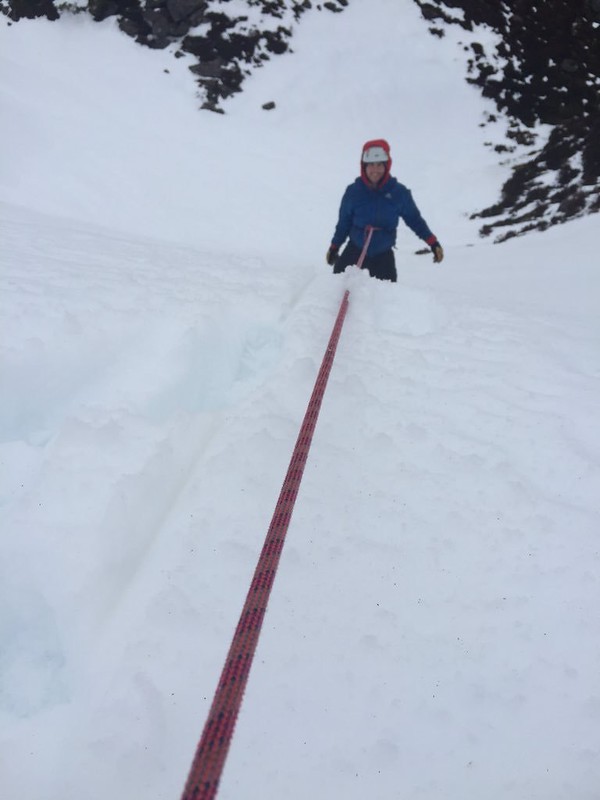
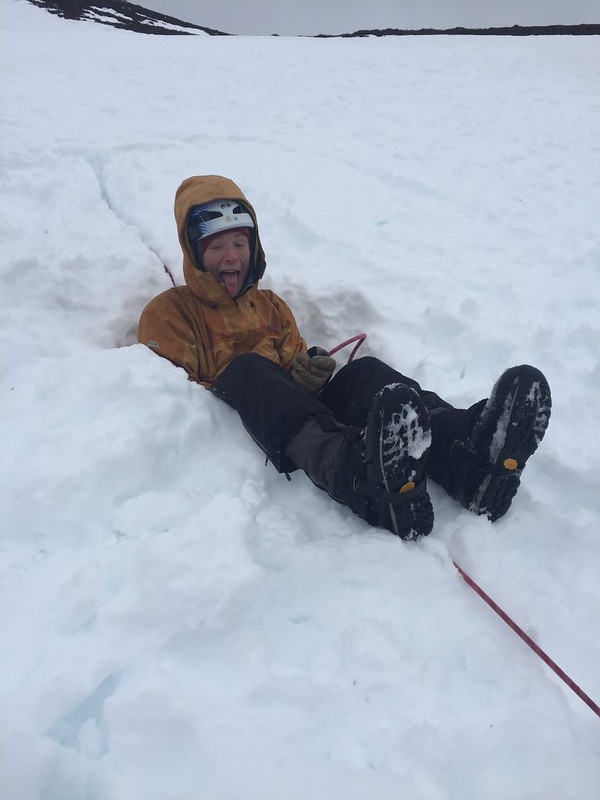
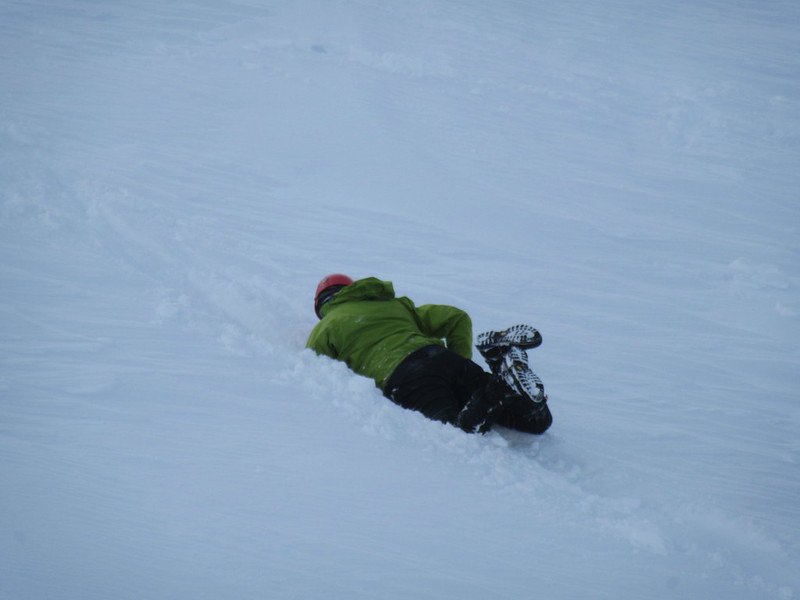
Cold weather injuries were also a focus: hypothermia and frostbite don’t announce themselves; they creep in slowly. Afternoon navigation introduced Harvey’s 1:40,000 maps, which proved excellent for winter terrain. An evening talk on winter hazards, especially wind slab and avalanche triggers, reinforced the need for constant risk assessment.
Day 3: Whiteout Navigation and Avalanche Awareness
Location: Coire Laogh Mor
Weather: Heavy snow, 30–50 mph winds, frozen ground, avalanche risk: considerable
By now, winter navigation was becoming second nature. With every feature buried under snow, slope angles and contours became our primary tools. We learned to trust the process, walk on a bearing, maintain pacing, and accept that relocation is a skill honed by practice.
In the afternoon, we tested snow stability, performing hand-shear tests and digging pits to examine weak layers. Seeing a slab shear away in real time drove home the avalanche risk.
Day 4: Blue Skies and Steep Ground
Location: Fiacaill Coire an t-Sneachda
Weather: Clear skies, little wind, avalanche risk: considerable
Finally, a break in the weather! With firm snow underfoot, it was the perfect day for steep ground ropework, bucket-seat belays, T-slot anchors, and efficient movement. Navigation in clear conditions was a different challenge: without the constraints of low visibility, it was easy to get complacent. We were reminded that good habits must remain constant, no matter the conditions.
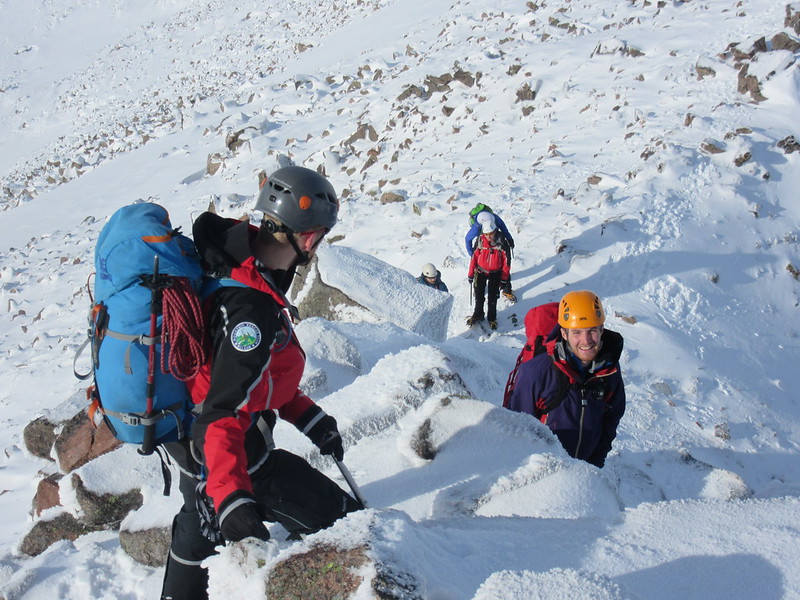
An evening expedition planning session prepped us for the upcoming overnight snow-hole bivouac.
Days 5–6: The Snow-Hole Expedition
Location: Carn Ban Mor – Sgòr Gaoith
Weather: Near-zero visibility, 30–50 mph winds, deep drifts
Expedition time. Heavy packs, wading through snow, and relentless wind made for an exhausting ascent. Morale management was key—rotating trail-breakers, keeping spirits high, and ensuring we didn’t burn out too soon.
Digging our snow shelters took hours but provided essential lessons: ventilation, structural integrity, and that extra little bit of effort to make it 10% better for better nights sleep. Despite the hard work, settling into the snow hole for the night felt surprisingly comfortable.
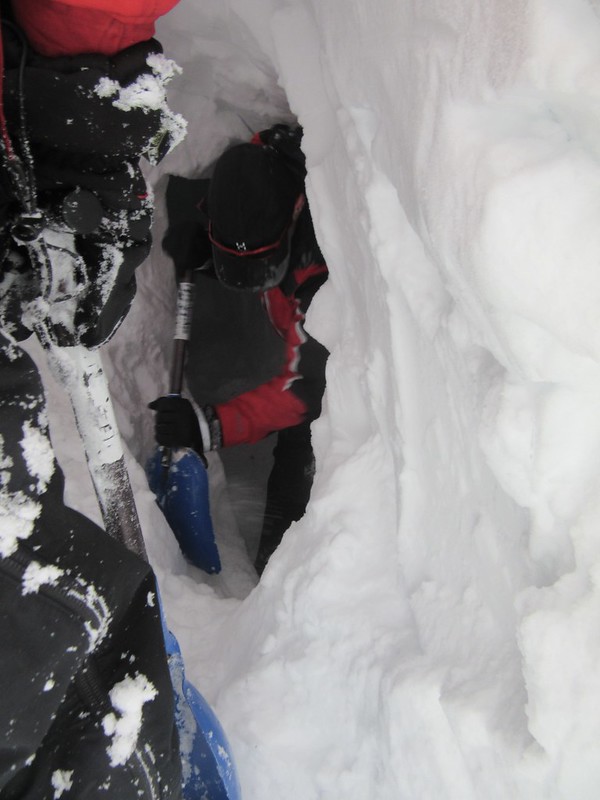
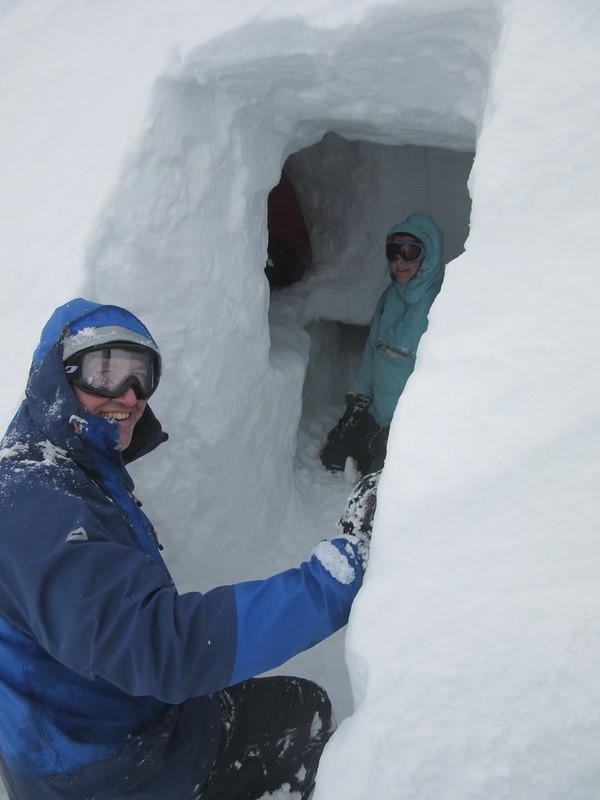
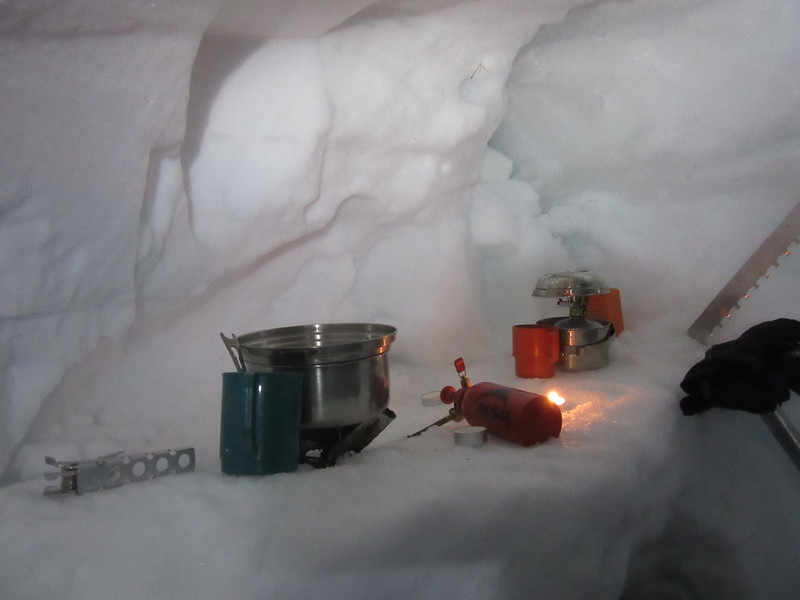
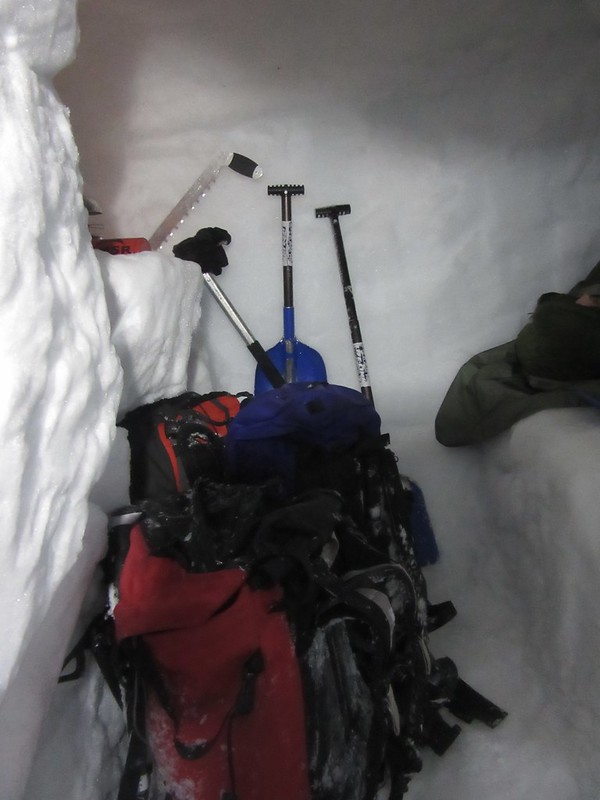
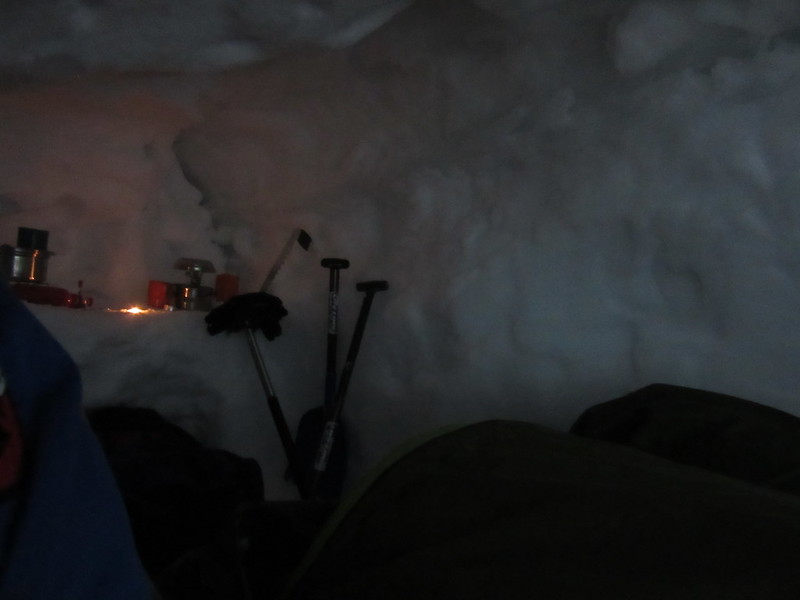
Morning greeted us with full whiteout conditions. Navigation was intense, trusting bearings, checking slope angles, and moving efficiently in deep snow. By the time we returned to Glenmore Lodge, we had earned every hot drink and drying room session that followed.
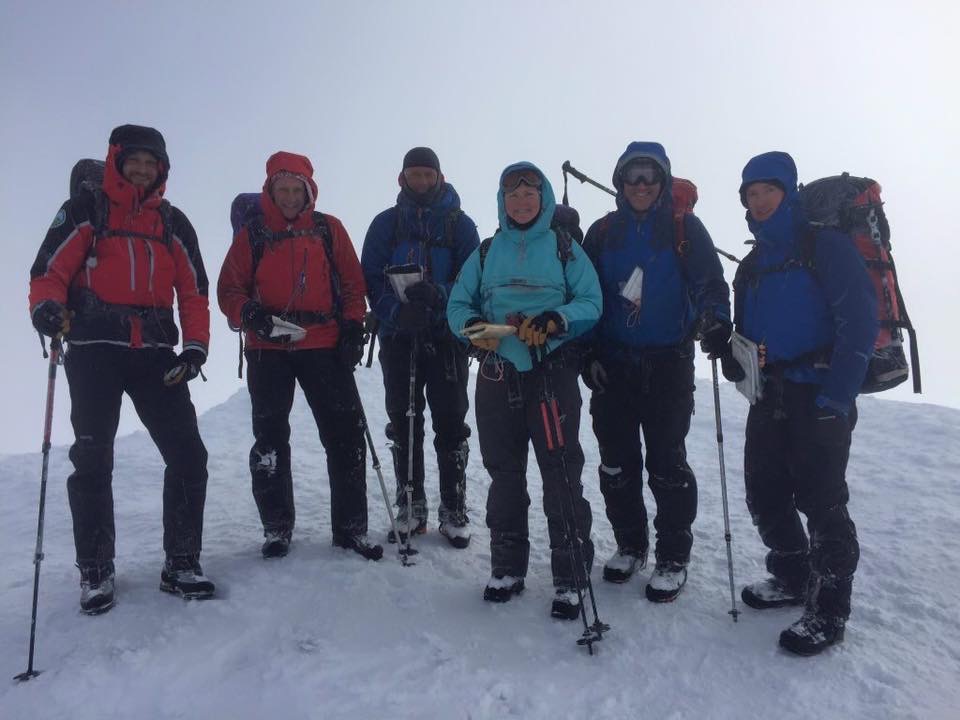
Final Thoughts: Key Takeaways
This week cemented some fundamental lessons:
- If you love digging, navigating in a featureless landscape, and embracing the elements, this is for you.
- Contours and slope aspects are your best friends when features disappear.
- Walking on a bearing and trusting the process is a skill built through practice.
- Fitness is everything. The stronger you are, the more energy you have for leadership, safety, and decision-making.
- Judgment is key. Knowing when to push on, when to change plans, and when to retreat is what defines a great winter leader.
With more Scottish winter seasons than I can count and over two dozen Quality Winter Mountain Days under my belt I knew I was on the right path. But the journey is just beginning, more winter days, more practice, and a continued pursuit of becoming a leader who can handle whatever the mountains throw my way.